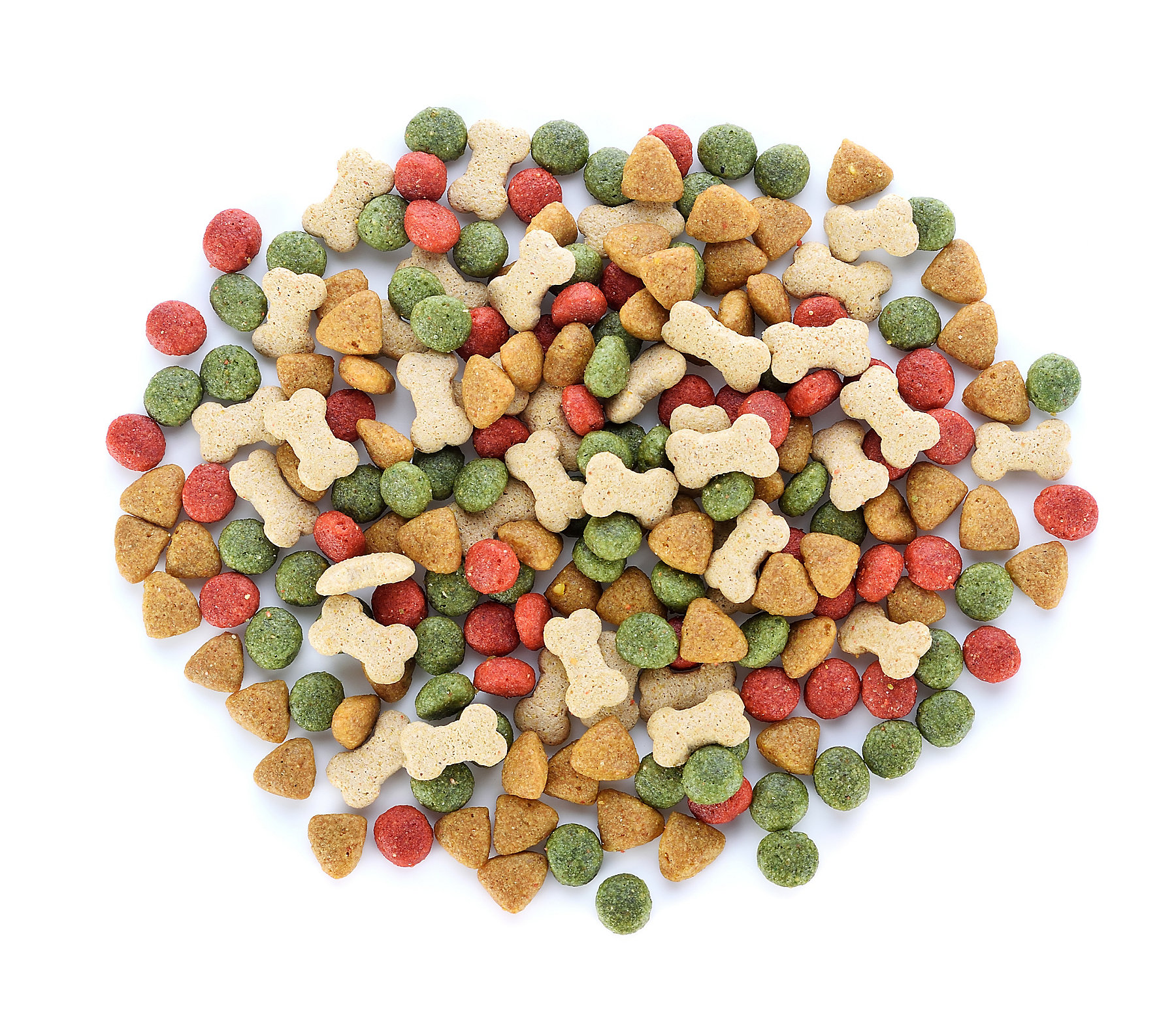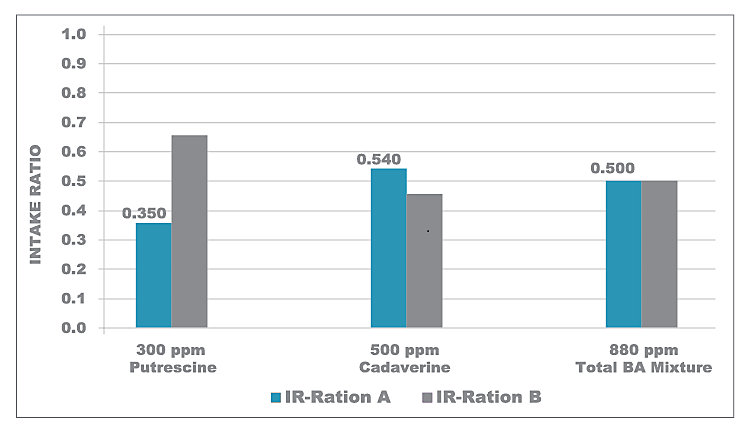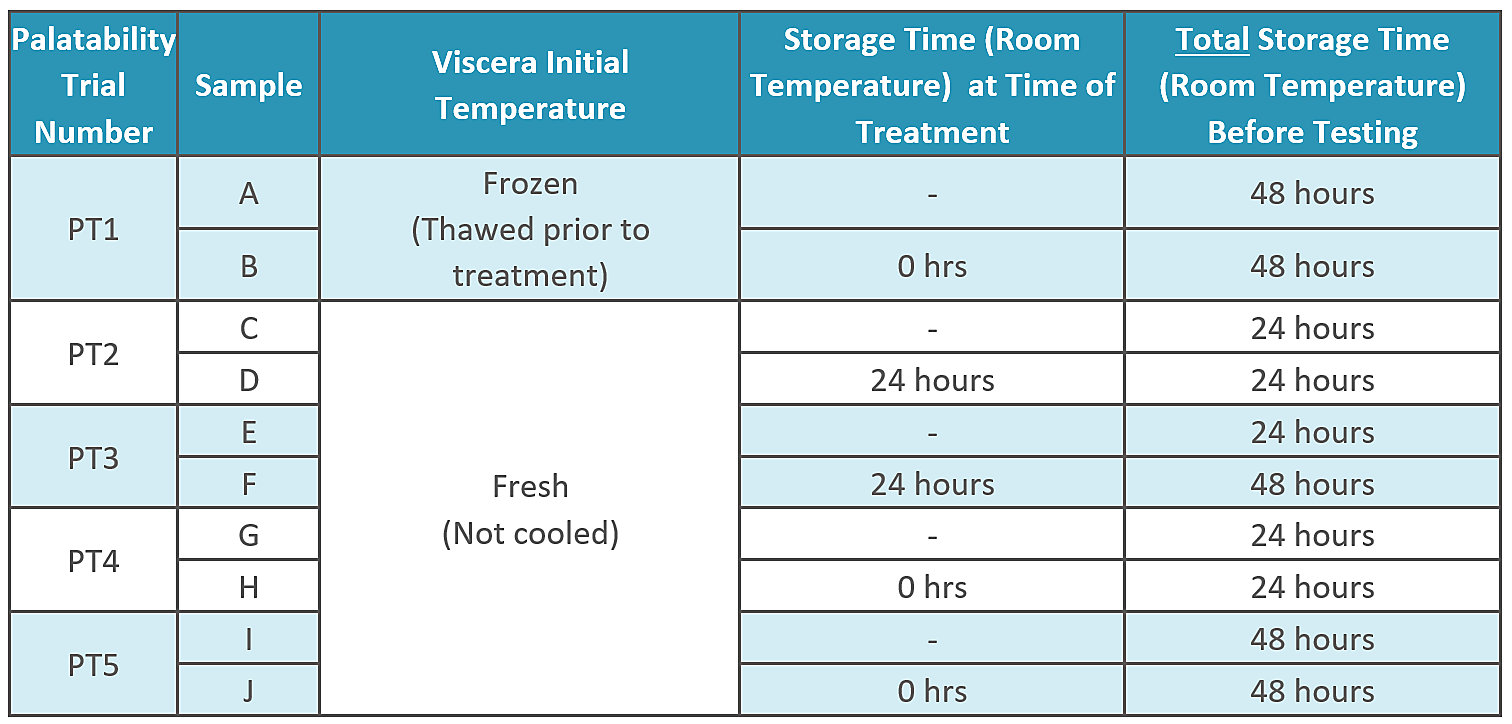Microbial spoilage is a broad term that refers to the deterioration of food that is caused by microorganisms, including yeast, mold and bacteria. Under the right conditions, microorganisms can grow or survive in almost all kinds of food products, including ubiquitous pet food ingredients, like meat products, animal fats and starches. The byproducts of microbial spoilage have been shown to have an impact on the palatability of pet food for both cats and dogs.
You are viewing South Asia
- United States
- Canada
- Mexico
- South America
- EMENA
- Sub-Saharan Africa
- Russia
- South Asia
- Asia Pacific
- China
- Global
Choose Your Location:
- United States
- Canada
- Mexico
Popular Searches
- Pet Food & Rendering Technologies
- Solutions for Pet Food
- Palatability
- Spoilage and Pet Food Palatability
Spoilage and Pet Food Palatability
Microbial Spoilage on Palatability
We performed two studies to test the impact of microbial spoilage on food palatability. The first study takes a direct approach by applying controlled amounts of biogenic amine solutions directly to the outside of kibble in order to evaluate the dosage of biogenic amines able to affect palatability. In the second study, poultry viscera was left untreated or treated with preservative either upon arrival or 24 hours after arrival. The different poultry viscera samples were then used to create palatants and were evaluated to determine the effect of preservation on microbiological counts and palatability.

Study: Direct Application of Biogenic Amines to Kibble1
Biogenic amines (BA) are byproducts of microbial spoilage that are produced by decarboxylation of free amino acids. The concentrations of some biogenic amines (tyramine, putrescine, and cadaverine) normally increase during the processing and storage of meat and meat products, whereas others (spermidine and spermine) decrease or remain constant.2 The freshness and quality of meat and meat products is therefore critical for the quality and, and potentially palatability, of the final pet food products.
Even if the presence of biogenic amines in pet food could affect palatability, no data was available at the beginning of this study to fully evaluate this topic. The objective of this study was to determine the dosage of biogenic amines able to affect palatability in cats as well as in dogs, by treating selected standard diets with controlled amounts of biogenic amines of choice, respectively histamine, putrescine and cadaverine.

Palatability of treated cat food showed a negative impact for kibbles containing 300 ppm of putrescine, but the biogenic amine mixture didn’t show the same effect as the amine alone, see Figure 1. Further tests would be needed to determine the minimum threshold for negative palatability impact. Monitoring the level of putrescine in cat products could be a way to improve palatant efficacy and could lead to better performing products.
Study: Effects of Preservation of Palatant Starting Material on Palatability3
Production of high quality pet food requires the use of good quality raw materials. The quality of common pet food raw materials, including animal protein meal and fresh or frozen meat or meat byproducts, depends of the freshness of the raw materials before processing and good preservation after processing. Unfortunately, in practical conditions it is very difficult to use fresh raw materials only in a processing plant.
The objective of this study was to evaluate the effect of preservation of poultry viscera on microbiological counts and on the palatability of a palatant made from poultry viscera with different preservative treatment times.
In order to evaluate the influence of poultry viscera treatments on palatant performance, ten palatants were created using the same formula, with the only variable being the treatment of the poultry viscera starting material. The ten palatant variations are listed in Table 1, grouped by variables that were tested head-to-head in palatability trials.

Palatability trials show that immediate treatment of viscera has a significant impact of palatability when palatants were prepared 24 to 48 hours after treatment. It is shown that the palatability effect of the addition of a preservative is limited when the viscera quality has already started to deteriorate.
References
1. Kemin Internal Document: SD-19-00018
2. Ruiz-Capillas C. and Jimenez Colmero F. (2004). Biogenic Amines in Meat and Meat Products. Critical Review in food science and Nutrition. 44: 488-499
3. Kemin Internal Document: SD-19-00022
Contact Kemin
- California Supply Chain Act
- Email Disclaimer
- GDPR Personal Data Addendum
- General Terms & Conditions for Vendors
- Global Environmental Policy Statement
- Indirect Cost Estimates
- Kemin Terms & Conditions
- Modern Slavery Act Transparency Statement
- Privacy Policy
- Sitemap
- Change Cookie Consent
- Animal Welfare Statement
© Kemin Industries, Inc. and its group of companies all rights reserved. ® ™ Trademarks of Kemin Industries, Inc., USA
Certain statements may not be applicable in all geographical regions. Product labeling and associated claims may differ based upon government requirements
